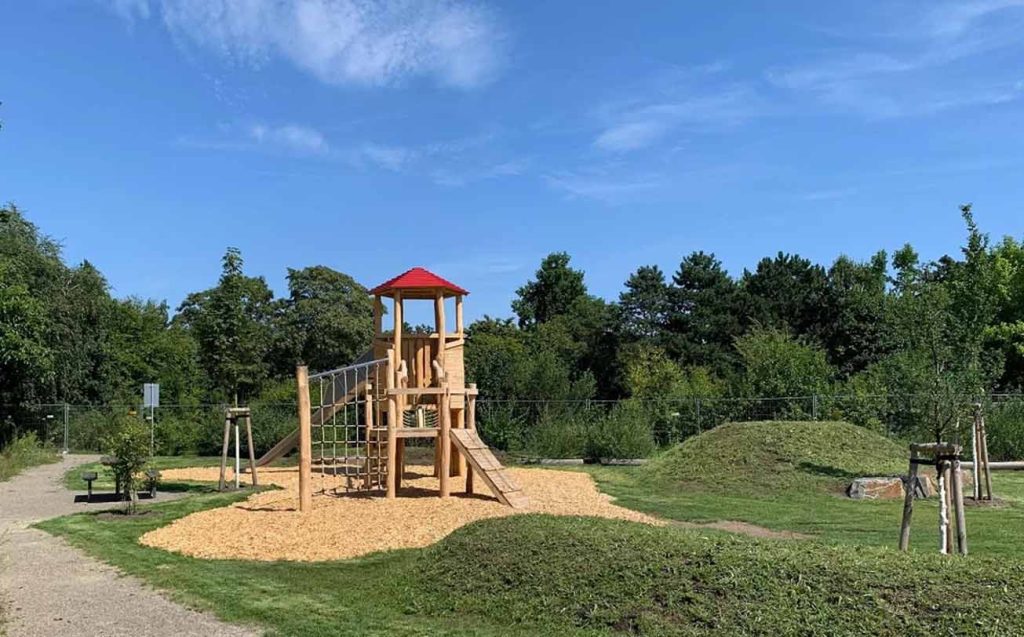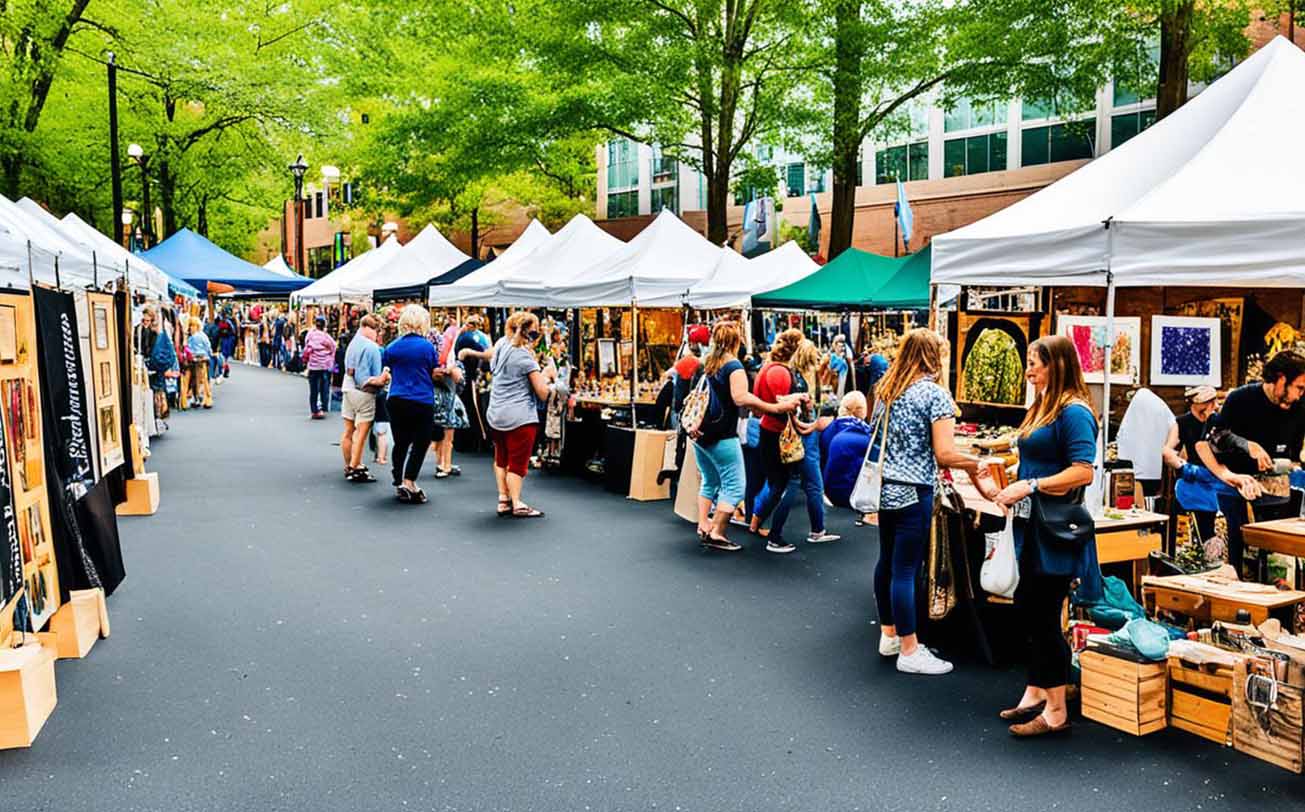1. Arrival in a City Draped in Green
Osnabrück is nestled in Lower Saxony, a city shaped by both war and peace, resting on the cusp of historical solemnity and environmental serenity. The Peace of Westphalia may have once written its name in the pages of history, but it is the city’s gardens and parks that carve its signature into the senses.
With each breath, a quiet excitement stirred. This wasn’t a journey driven by monuments or museums. This was a pilgrimage to greenery—a slow, reflective walk through living architecture, where chlorophyll rather than concrete told the story.
2. Botanischer Garten der Universität Osnabrück: A Labyrinth of Life
The first destination unfolded just south of the city center. The Osnabrück University Botanical Garden, tucked quietly along Albrechtstraße, had none of the grand entrances one might expect. A modest sign, nearly swallowed by ivy, marked the gateway to what would become hours of leafy contemplation.
Entering, the sounds of the city fell away as if muffled by an unseen quilt. Gravel paths curled through the landscape like veins in a leaf. The air shifted, cooler under the canopy. To the left, a section of towering bamboo swayed in the wind, their elegant necks bending in mutual agreement with the breeze.
The garden is organized by both geography and ecological function—alpine rock gardens, moorland, heathland, and wetlands each flourishing within their own microcosms. The Mediterranean section caught me by surprise. Surrounded by pines, olive trees, and clusters of rosemary, I could nearly taste the salted air of distant southern coasts.
The greenhouse complex invited a slower pace. Entering the tropical house was like stepping into a warm sigh. Moisture hung in the air like invisible lace, beads forming on the skin within seconds. Gigantic philodendrons unfolded like ancient scrolls. Orchids hovered in midair with improbable grace. Somewhere in the background, water gurgled over dark stones, as though whispering secrets in a language I could only feel.
Outside, I found the carnivorous plant display—nature’s own gothic garden. Venus flytraps poised like stage actors, pitcher plants filled with rainwater and mischief. There is something whimsically cruel about a garden that quietly devours its visitors—if only the insect kind.
I spent nearly half a day walking those paths, sitting on wooden benches beneath sprawling oaks, tracing the veins on fallen leaves. The garden did not demand attention; it invited it.
3. Schlossgarten Osnabrück: Baroque Grace Meets Botanical Discipline
Just a brief stroll from the university grounds, the Schlossgarten stands as a symmetrical counterpoint to the organic sprawl of the botanical garden. Once the private garden of the Osnabrück Castle, it retains a sense of baroque order—long lines, clean geometry, floral patterns designed with surgical precision.

The castle itself, a stately white structure with a red roof, reflects a dignified calm. In front of it, a broad gravel path splits the garden into mirrored halves. Neatly trimmed hedges hem in beds of tulips, pansies, and begonias, arranged in choreographed bloom cycles.
Children ran barefoot across the lawns. Elderly couples in pressed linen shared newspapers and ice cream. A man in a blue cap sat on a bench sketching the castle with a mechanical pencil, his hand moving in slow, reverent arcs.
It felt like a stage, this garden. A place where life plays out in daily scenes: a handshake beneath the lindens, a whispered conversation beneath the pergola. And yet, for all its order, it did not feel contrived. The Schlossgarten carries the grace of an old ballet, every movement measured, every step rehearsed, yet still able to stir emotion.
4. Bürgerpark: Where Stillness Meets the Everyday
Further north, the Bürgerpark presented a different experience altogether. It is a park for the people—less a display, more a daily ritual. Wide paths loop around playgrounds, dog walkers stroll in quiet rhythm, and the occasional cyclist glides by with the elegance of someone who has never once fallen off.
I followed a trail that curved alongside a narrow canal. On one side, reeds bowed over the water like gossiping elders. On the other, a meadow opened up, dotted with daisies and clover, their heads tilted toward the early afternoon sun.
Here, the greenery is democratic. No section cordoned off, no sign discouraging bare feet. The park breathes with its visitors, not despite them.
At one point, I paused at a small wooden footbridge. A young couple stood at the center, feeding crumbs to ducks with the gravity of ambassadors bestowing blessings. The ducks, naturally, accepted with the indifference of creatures long accustomed to flattery.
There is something timeless in a park like Bürgerpark. It doesn’t ask to be admired. It simply is. And in being so, it becomes a mirror for every passerby’s mood—joyful, tired, thoughtful, indifferent.
5. Rosenplatz and its Quiet Blossoms
It took little effort to find the small square called Rosenplatz. The name alone pulled at something—perhaps a romanticism planted in the mind long before I arrived. I expected perhaps a riot of roses, a place thick with perfume and lovers locked in embrace beneath flowering arches.
What I found was subtler, and more powerful.
The roses were indeed there, arranged in beds, their colors ranging from blushing pinks to deep, noble reds. But they did not dominate. They whispered rather than shouted, set against low brick walls and wooden benches shaded by mature maples.
An elderly woman sat on one such bench, knitting slowly. A young man nearby read from a battered paperback, pausing every so often to glance at the flowers, or perhaps beyond them. The place was not designed for dramatic gestures, but for quiet endurance.
Here, the green is disciplined and respectful, a harmony rather than a crescendo. It is a place that knows its role in the choreography of daily life.
6. Rubbenbruchsee: Where the Forest Meets the Lake
Toward the western edge of Osnabrück lies Rubbenbruchsee, a place where forest and water converse in rustling whispers and mirrored glances. I rented a bicycle near Westerberg and followed the signs through neighborhoods that slowly dissolved into woods.
The lake appeared gradually—one moment trees framed the path, and the next, a sheet of silver opened up ahead, rippling softly beneath a sky now thick with clouds.
Paths circled the lake, some paved, others veering off into the underbrush. Joggers moved past like metronomes. A father taught his daughter to skip stones near a pebbled shore. The splash of each stone was followed by laughter so bright it seemed to part the clouds.
I walked along the eastern shore, where benches faced the water. Each offered a different perspective. In one direction, the opposite bank wore its trees like a crown. In another, a small pier jutted out into the water, where a boy in rubber boots dropped bread crumbs and waited like a fisherman for stories.
There was a café near the north end—more of a cottage, really, with wooden tables and steaming mugs of dark coffee served without flourish. I sat beneath a birch and watched as the light faded over the lake, every minute reshaping the surface in shifting shades of blue and charcoal.
7. The Unexpected Gardens: Hidden Corners and Green Surprises
Osnabrück reveals its green in layers. Beyond the known parks and mapped gardens lie smaller, quieter spaces that bloom without fanfare.
A narrow passage behind a bakery opened into a small courtyard garden, vines climbing stone walls like ancient calligraphy. The scent of fresh bread mingled with lavender. A cat slept in a flower pot, unmoved by the world.
At the corner of Lotter Straße, a community garden took root beside a grocery store. Children planted radishes in neat rows, their plastic spades slicing the earth with determination. Painted signs named each plot like chapters in a garden novel.
Near the Kunsthalle, a vertical garden rose against a brick wall, its greenery arranged in pockets. Herbs, succulents, wild strawberries—all thriving above the heads of pedestrians, quietly redefining what a garden could be.
It’s in these pockets, these overlooked corners, that Osnabrück’s commitment to green truly comes alive. Not merely in grand gestures, but in the everyday miracle of growth and attention.
9. Eversburg Park: Where History and Hedges Intertwine

To the northwest of the city lies Eversburg Park, not as frequently sung about as some of its counterparts, but all the more stirring for it. The park wears its history lightly—old walking paths wind through carefully maintained woodlands, remnants of 19th-century landscaping still detectable in the shape of the terrain and the placement of the chestnut trees.
I arrived early in the morning, just as the light filtered through a gauze of mist. A small pond mirrored the sky, disturbed only by the cautious steps of a heron. Benches faced the water in humble semicircles, as though audiences waiting for the curtain to rise on some natural performance. The stillness here was almost theatrical.
A narrower trail led into the forested section of the park. There, the sounds changed. No more footfalls on gravel—only the crisp, intermittent crackle of leaves underfoot, the startled flutter of wings in the underbrush. Tree trunks rose like silent columns in a cathedral of green, each moss-covered and heavy with time.
A weathered informational plaque told of the former estate that once graced these grounds. That memory now sleeps beneath soil and ivy. In its place, nature has reclaimed its rightful voice, and in doing so, has built something not just new, but continuous.
10. Gerrit-Engelke-Park: A Linear Retreat Along the Hase
Named after a poet, Gerrit-Engelke-Park stretches like a ribbon along the banks of the River Hase. It’s a long park, more a green corridor than a concentrated space, but therein lies its beauty: it flows.
Walking here is like moving through a series of verses—each bend of the river offering a different stanza. The river itself, shallow and brisk, chattered as it passed beneath small footbridges. Ducks trailed each other with solemn purpose, their wakes scribbling temporary lines into the current.
The park is designed for motion—cyclists glide past, joggers weave in and out, mothers push strollers while sharing stories in quiet tones. And yet, it holds space for pause. On a wooden bench beneath a weeping willow, I unpacked a sandwich of rye, mustard, and cold roast beef, bought from a local Metzgerei. Even the simplest meal tastes better when eaten beneath a tree beside a moving river.
Children played nearby on a small playground built with natural materials—logs, ropes, and balancing stones. It felt organic, grounded. As if the park itself had grown the playground as a gesture of welcome.
11. Green at the Edge: Heger Friedhof and the Quiet of Remembrance
It may seem unusual to list a cemetery among the green spaces of a city, but Heger Friedhof is unlike any I’ve encountered. It is not only a place of rest, but of growth—trees planted in memory, ivy covering the old stones like hands over hearts, paths edged by forget-me-nots and wild violets.
Walking through it felt less like trespassing on grief and more like joining a community of quiet thoughts. Names on weather-worn markers, dates fading, flowers freshly placed—this space holds continuity, both botanical and human.
At the center, an open grove allowed the light to fall freely. A robin perched on a wrought-iron cross and sang for nearly three minutes. It felt improvised, honest, unrehearsed.
Here, the green was not merely backdrop—it was witness, comfort, and promise. Life grown from memory, not in defiance of it.
12. The City Streets Between the Green
Osnabrück doesn’t treat its green spaces as isolated islands. Instead, the streets themselves serve as green arteries—tree-lined boulevards, ivy-covered façades, small planters in windowsills that seem to wink as one passes by.
On Mühlenstraße, I counted six different species of flowers growing from the cracks between cobblestones. Outside a school, a vertical garden rose like a green tapestry stitched with enthusiasm and student curiosity. At Neumarkt, a temporary pop-up garden installed in large crates brought color and scent to the urban bustle.
Even the tram stops boasted vertical trellises and climbing vines, as though the city insisted that waiting for public transport should include a lesson in horticulture.
This interweaving of green into the urban fabric creates something subtle but powerful. A kind of ongoing conversation between built space and living matter. One does not dominate the other; instead, they engage in a kind of cooperative growth.
13. When the Wind Changes: Evening Walks in Westerberg
The Westerberg district became my favorite place to walk as evening fell. Here, large homes with sculpted gardens sit side-by-side with student housing and quiet apartment blocks. But what drew me wasn’t the architecture—it was the trees.
Each evening, I chose a new direction. Linden trees guided me down one lane, copper beeches down another. Every block revealed a different scent—sweet honeysuckle in one garden, the sharp resin of pine in another. The light filtered through leaves in golden tessellations, and the occasional cat appeared and vanished like a shadow with whiskers.
The green here was lived in, domesticated yet proud. One yard sported a solitary apple tree, gnarled and bearing fruit. Another grew vines over a second-story balcony, forming a natural canopy that shivered with each breeze.
At times I passed neighbors chatting over hedges, their garden tools resting nearby. Once, an older gentleman offered a nod of acknowledgement as he watered a bed of irises. The evening felt less like an end, and more like a soft closing of a storybook, with the promise of reopening tomorrow.



